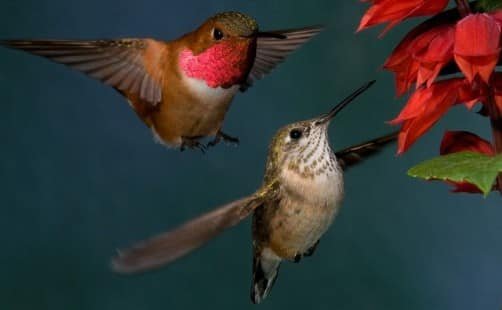Hummingbirds Learn to Count to Find Their Favorite Flowers
By Theresa Machemer/Smithsonianmag.com
New research suggests that wild hummingbirds can keep count as they forage and use their counts to keep track of the sweetest flowers.
The new paper, published on July 8 in the Proceedings of the Royal Society B, found that male rufous hummingbirds can learn which fake flower in a sequence holds a nectar-like syrup. Only one flower in ten held syrup. But even when the researchers moved the location of the artificial flowers and the distances between them, scientists observed the birds returning to the syrup-filled flower.
“They would never lose their car in the car park,” says biologist Susan Healy of the University of St. Andrews to Cathleen O’Grady at Science magazine.
Hummingbirds join a growing club of animals that can understand sequences, which includes rats, guppies and monkeys. Last year, researchers showed that Emory University showed that dogs use a brain region for number processing that’s analogous to the region used by humans, Katherine Wu wrote for Smithsonian last December.
The new research is unique because it focuses on counting ability in the wild, rather than in a lab.

Carol graduated from Riverside White Cross School of Nursing in Columbus, Ohio and received her diploma as a registered nurse. She attended Bowling Green State University where she received a Bachelor of Arts Degree in History and Literature. She attended the University of Toledo, College of Nursing, and received a Master’s of Nursing Science Degree as an Educator.
She has traveled extensively, is a photographer, and writes on medical issues. Carol has three children RJ, Katherine, and Stephen – one daughter-in-law; Katie – two granddaughters; Isabella Marianna and Zoe Olivia – and one grandson, Alexander Paul. She also shares her life with her husband Gordon Duff, many cats, and two rescues.
ATTENTION READERS
We See The World From All Sides and Want YOU To Be Fully InformedIn fact, intentional disinformation is a disgraceful scourge in media today. So to assuage any possible errant incorrect information posted herein, we strongly encourage you to seek corroboration from other non-VT sources before forming an educated opinion.
About VT - Policies & Disclosures - Comment Policy




